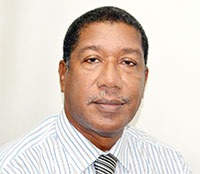WHEN amalgam was first introduced in the United States in 1833, many dentists were outraged at the suggestion of installing such a highly toxic metal in their patients’ mouths. In Germany, amalgam was called “Quicksilver” and anyone who placed amalgams was called a “Quack”. In fact, this was the origin of the word “quack.”
This controversy, later termed the First Amalgam War, was quelled when mercury proponents insisted that it was safe because it was stabilised in the hardened amalgam compound of silver, copper, tin and zinc and did not come out. Since amalgam was less expensive and easier to work with than the standard gold fillings, it was not long before silver amalgam was routinely used for filling cavities.
Controversy over amalgam use surfaced again in 1926 and into the 1930s when a German physician, Dr Alfred Stock, showed that mercury escaped from fillings in the form of a dangerous vapour that could cause significant medical damage. During this Second Amalgam War, the American Dental Association vigorously defended silver amalgam, and its widespread use continued.
The Food and Drug Administration has separately approved mercury and alloy powder for dental use, but amalgam mixtures have been approved as dental devices. Consequently, by using amalgam, dentists are using a non-FDA-approved device.
The Third Amalgam War began heating up in 1986. Pressure from mounting clinical evidence forced the ADA to finally publicly concede that mercury vapour moves from the amalgam filling into the patient’s mouth. But the ADA remained adamant that mercury in patients’ mouths is safe, and in 1986, it changed its code of ethics, making it unethical for a dentist to keep the consumer
informed of a potential serious health risk or to recommend a procedure that could possibly improve his emotional and physical health.
For years, the American Dental Association has insisted that the silver amalgam used for filling cavities is safe. And despite studies showing toxic mercury vapour readings in the mouths of patients with silver amalgam fillings, the American Dental Association still maintains that mercury fillings are safe.
On December 16, 1990, the famous CBS television programme “60 Minutes” dealt thoroughly with silver amalgam fillings. The general message was that it was unsafe.
With effect from October 1998, all over-the-counter products containing mercury sold in the United States had to be removed from the shelves because the manufacturers could not prove their safety.
Notwithstanding, there has not been sufficient evidence to suggest that the use of silver amalgam should be discontinued. My professional advice is to be aware of it. Despite the fervent persuasion of critics of this filling material, it remains common in some quarters of the world. In fact, silver amalgam fillings in the poorest countries are as popular as ever mainly because they are cheap, durable, and easy to use.




.jpg)










